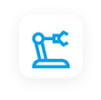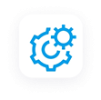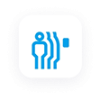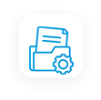Digital transformation is already an integral part of businesses today. The next pivotal step is the optimization of digital platforms with innovative designs and engaging content–especially in the case of industrial automation–where the software and web applications are more human-facing. Intuitive interfaces can improve visual cues and enhance engagement. Therefore, User Interface (UI)/User Experience (UX) is integral to the industrial automation systems.
A well-rounded UI/UX design can significantly improve the company's digital identity and help implement targeted strategies, creating a better impact. Integrated and comprehensive digital experiences can change the face of businesses, enhancing security, productivity, and management.
If you're building an industrial automation system, here are the top 5 important things to know about UI/UX.
1. Understanding User Requirements
Industrial automation involves several digital tools, interconnected devices, and dynamic systems. Although human intervention is minimal, crucial decisions, inspections, management, control, and monitoring are all based on human capabilities. Poorly designed user interfaces can confuse the user and have negative consequences. Therefore, websites and applications for industrial automation tools should be kept comprehensible for easy user navigation.
The UI/UX design should emphasize building a rapport between the system and the user. It must accommodate logical and intuitive navigation features that streamline industrial workflows, improve usability, and simplify operational processes. Therefore, it is crucial to identify the user requirements and develop a suitable design ensuring optimal functionality.
2. Right Integrations for Desired Results
The 4th Industrial Revolution is supported by a cluster of emerging technologies. Cognitive/AI computing, Cloud Computing, Machine Learning algorithms, Industrial Internet of Things (IIoT), and other such advanced solutions power automated industrial environments with smarter workflows. However, complicating the UI/UX interface with too many integrations can result in unclear and confusing GUI navigation and control, leading to unsatisfactory user experiences.
Besides, different automation functions demand different technicalities. When choosing the technical framework of the interface, it is important to consider different aspects like information architecture, interaction and visual design, user-friendliness, and wireframing. Therefore, picking the right tools and technologies for a well-planned UI/UX flow is crucial.
3. Personalization
Customization is the key to improved outcomes. One of the primary purposes of UI/UX effective interfaces is to create a collaborative and smooth work environment. A single design, however, cannot address the needs of every business.
All businesses have a different user base and prioritize some features over others. Even if there are plenty of web portals or software applications in the entire system, it is essential to create customized solutions in each case for smooth and efficient user experiences.
Besides, customization ensures the utmost efficiency, especially in the industrial landscape. It helps create appropriate conceptual models for transforming the physical workspace with effective integration and intelligent planning. Thus, customized UI/UX can maximize industrial automation performance by simplifying their workflow per their requirements.
4. Safety Cannot be Compromised
The UI/UX designed for industrial systems must also address potential security risks and vulnerabilities within their designs. Unauthorized access, cybercrimes, spoofing, and malicious phishing can cripple the system. Therefore, security measures should be foremost when user interfaces are designed in industrial automation systems.
There are prescribed safety standards and regulations for automation systems. It is important to adhere to these measures for increased credibility. Also, UI/UX designs must include advanced features like end-to-end encryption, two-factor authentication, automatic logout times, HTML5 content, and controlled external references for better security and prevention of unauthorized access to these key industrial systems.
5. Data Visualization for Better Analysis
Clear and informative data presentation is a must for effective UI/UX. As industrial enterprises largely adopt cloud manufacturing, IoT, remote systems, and other such technologies in their digital manufacturing systems, it is vital to develop interfaces with real-life pictures and sophisticated typography for better data visualization.
User interfaces can include bars, line charts, graphs, quick access summaries, and other such features for quick information processing. Localized human-machine interfaces (HMIs), sophisticated touch panels, and site-wide supervisory controls can also help improve data operations through the UI/UX.
Summing Up
Intricate automation systems demand more flexible and adaptable UI/UX. These platforms can help accommodate the rapidly evolving industrial needs. They create relevant and accessible user experiences, encompassing every aspect of the industrial operation. Thus, UI/UX design is a strategic imperative that should nurture the human-machine relationship for operational excellence. With well-designed UI/UX, businesses in the automation technology space can better serve the needs of industrial applications and position themselves better with more effective and reliable automation systems.

 Factory Automation
Factory Automation Logistics Automation
Logistics Automation Process Automation
Process Automation Crane Collision Avoidance
Crane Collision Avoidance LiDAR/Obstacle Detection
LiDAR/Obstacle Detection Safety Laser Scanners
Safety Laser Scanners Optical Data Transmission
Optical Data Transmission Hot Metal Detectors
Hot Metal Detectors Laser Distance Sensor
Laser Distance Sensor Blog
Blog Whitepapers
Whitepapers Case Studies
Case Studies Infographics
Infographics